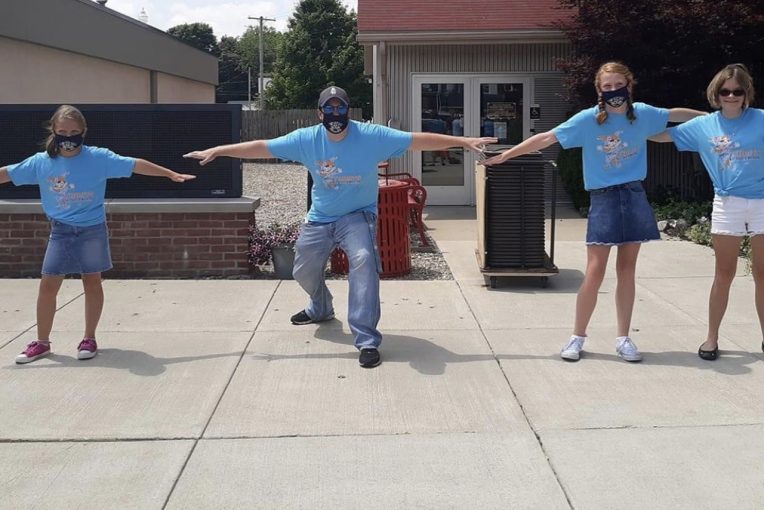Traditionally, teachers are able to have their entire class in their line of vision, allowing them to make sure students are understanding the material as well as making each student feel seen. Instruction over a computer makes it difficult to get any of that feedback from students. Given his performing background, several of Chad Tallon’s colleagues have reached out to him recently to get some pointers about keeping student engagement up during virtual classes.
Tallon has an MFA in Acting and has multiple “Acting for the Camera” classes, which he feels have been valuable in his teaching today. He compares the difference between teaching in-person and teaching via computer to the difference between acting on stage and acting for screen. In a Zoom classroom where students are muted, it is difficult to feel like the class is really understanding a topic.
“We, as educators, need to supplement the lack of energy we are receiving from our students with energy of our own,” said Tallon. “Even if we aren’t performers, the truth is, all teachers are acting the minute a class starts until the minute it ends.”
Tallon also recounted some advice he received from a colleague that teachers should create opportunities for direct interaction with individual students during virtual classes, using their names to comment on something they might be wearing or working on to help continue those necessary connections with students. These little interactions can go a long way in making a student really ‘seen’ by their teacher. However, he also stressed the importance of teachers being kind to themselves and understanding that they are doing their best to navigate this challenging time.
One key piece of technical advice for virtual teaching that Tallon gives is simple: stare at that little dot! Staring directly into the camera can feel unnatural when teachers want to look at the students to help make sure they understand. However, looking at the students on screen rather than directly into the camera is actually nonverbally telling students that the teacher’s attention is divided. That little dot is actually a connection from student to teacher.
“It might feel strange and you might feel self-conscious,” said Tallon. “However, I’d rather have you doubt yourself then have students doubt what they are learning.”
Tallon encourages teachers to prepare for each virtual class like they’re playing a role.
“Take a moment before each class to get into your teacher character, and focus all your energy into the small camera,” says Tallon. “Use your smile and your passion to make the world a better place, one Zoom meeting at a time.”
Tallon recently presented about the many ways that theatre can be helpful in teaching during the Teaching in the 21st Century conference (T21CON), hosted by the College of Education, on Friday, October 2. View a recording of his presentation. T21CON is a FREE conference that is designed for current and aspiring educators to learn more about using technology in the classroom. Session presenters are innovative teachers and education technology experts who lead efforts in their schools and districts.


